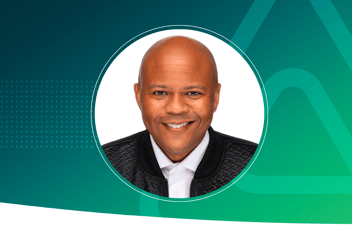Whether you’ve been hired as a DEI consultant or you have been tasked with increasing the presence and engagement of DEI initiatives at your company, you are likely to face a variety of challenges that prevent your work from progressing.
Whether it's gaining senior leadership buy-in, lack of resources, or establishing DEI presence, these, and other barriers can prevent the implementation of meaningful and impactful initiatives. These barriers can lead to ‘check-box’ DEI activities— activities that have little impact but are still implemented for the sake of the company’s reputation.
Here are three ways that DEI practitioners can move their programs from checking a box to high-impact:
Take a proactive, not reactive approach
Diversity, equality and inclusion practices and policies are closely linked to the changing nature of society, demographics, laws and government policies. So, in some instances, programs around DEI may be created directly in response to a particular event. For example, following the murder of George Floyd in May 2020, hundreds of companies in the USA committed to supporting the #BlackLivesMatter movement and other race equality and equity organizations.
This kind of reactive approach often includes social posts, one-off charity donations, or a statement from a CEO about their support for a movement. These low impact but seemingly high-profile activities, may seem good on paper, but consider:
What impact does this have on the culture of a company? How does this move DEI forward within an organization?
As a stand-alone initiative, reactive DEI solutions do little for the workforce of your company. They can, in some instances, have the opposite intended effect; if your workforce feels that these initiatives are tokenistic, they may lose interest in the DEI agenda which makes it harder to gain buy-in later for more wide-scale initiatives.
Instead, companies should look to analyze current employee issues and use an evidence-based approach to address challenges and identify trends before implementing nice-to-have and superficial initiatives. This is not to say that media campaigns should be avoided all together. Rather, companies must:
- Establish a narrative on the current and ongoing workforce challenges,
- Create opportunities for education on the importance of the initiatives
- Identify the goals that the company hopes to achieve from the campaign
- Connect the campaign with existing company DEI programs.
Otherwise, your DEI initiatives can easily come across to your employees and investors as reactive and performative.
Address the cause, not the symptoms
The aim of DEI programs are to improve equity and diversity across a business, and ensure that staff feel a sense of inclusion and belonging at work. Companies can implement hundreds of activities that seek to address current challenges and barriers.If you haven’t considered the following in developing your DEI interventions, they may have little to no impact.
Why does the inequity, lack of inclusion or diversity exist in the first place?
Systemic inequality around race, gender, class, sexuality, ability, etc., is pervasive and most of us will agree that it does exist; though convincing some of your colleagues at work may be one of the barriers you face as a lead on the DEI program. In most organisations, spaces of power and influence are not easily accessible to underrepresented groups and some people are unaware of the most appropriate way to engage with people of different races, religions, cultures, etc. For the most part, individual organizations do not have a direct influence on the reason these barriers exist. However, without reference to, and building an understanding of the cause of the problems, DEI initiatives can only be superficial strategies.
If your company’s DEI narrative and strategy does not focus on why certain groups are underrepresented, why they should be represented, and establish that it is a company priority to create equity amongst staff, you run the risk of DEI activities being tokenistic or perceived as tokenistic. Employees at all levels must understand that we are not all the same, we do not all have the same opportunities in life and the DEI initiatives you’re running within the company seek to address some of these inequities. Without this understanding, gaining genuine support from your leaders and other stakeholders, will be difficult and can lead to DEI interventions being check-box activities. Addressing the systemic barriers and then tapping into the experience and voice of the people who have experienced those barriers will ensure that companies don’t fall into the DEI check-box trap and can make meaningful change.
Leveraging the voice of diverse staff
Company staff networks play an integral role in building inclusivity, championing diversity, and supporting diverse staff to network and develop. While they shouldn’t be relied on to lead DEI activities or programs, they play an important part in the consultation and development of all staff-focused programs, whether it’s related to DEI, staff compensation or any other staff policy implementation or changes.
When it comes to DEI programs, companies should consult staff networks in the development of staff-focused programs to ensure the initiatives have an impact and won’t fall into the trap of being a check-box activity. DEI practitioners can leverage the voice of diverse staff in three ways:
Regularly consult on DEI initiatives
As a DEI practitioner, you should always include your staff networks in your stakeholder engagement plan. While their lived experience isn’t necessarily an indicator of their expertise as a DEI practitioner, they may be able to identify potential risks, best approaches, and benefits of an initiative you want to implement. Having additional and diverse opinions can build insight in improving your plans and ensure that you have the buy-in of an important group of stakeholders which can reduce the chances of you implementing a check-box activity.
Build a staff network champions’ group for broader representation
Most staff networks will have at least one network lead or chair. It can easily become the sole responsibility of this one person, or a small group of people to be the face or voice of an entire staff network. This is why it is important for several members of a staff network to be trained in leadership, advocacy and assertiveness to sit on senior boards or committees across your company. Not only will this support the professional development of people from underrepresented groups, but it will also ensure that the voice of diverse staff exists in all corners of a company, not just on one committee created to check a box.
Create forums for staff networks to raise issues
DEI initiatives cannot operate in a silo. For consistent and meaningful DEI programs to work, they must exist as part of a network of interconnected inclusive practices. For the diverse staff to have a voice on important issues, DEI practitioners can’t solely rely on the existence of staff networks or all-staff forums; specific spaces must be carved out so that issues can be raised, and diverse voices can be heard. By creating these safe spaces, DEI practitioners can help to identify existing challenges and implement evidence-based initiatives to address these challenges, which can move DEI initiatives beyond the check-box.
Overall, For DEI programs to be meaningful, impactful and not be reduced to superficial check-box activities, companies will need to be proactive in their approach, implement initiatives that address the cause of the issues rather than solely focusing on the effect of the issue, and engage directly with diverse staff for which much of the DEI initiatives will benefit.









